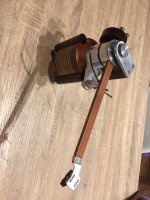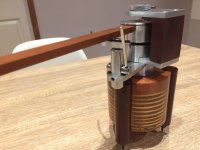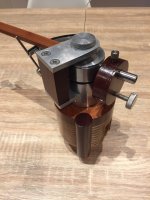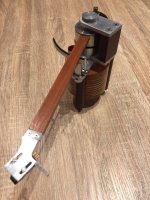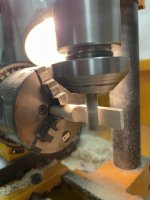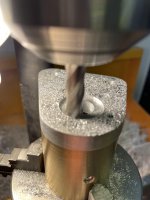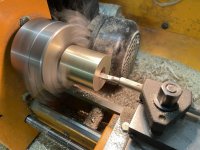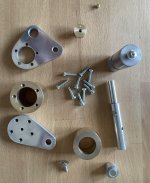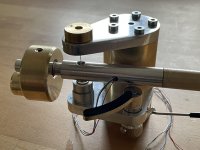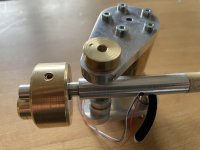It is impossible for the suspension point of the arm and the tip of the cartridge to be in the same plane....the depth of cartridges makes it so.
As to string length...I scaled mine from looking at photos of genuine Schroeder arms. Mine is between 25 and 30 mm. Too short and the thread will touch the sides of the narrow drill hole that the thread pass's through in the arm.... the thread must remain unhindered and unimpeded . I don't know if too long makes a difference but it feels intuitively like it will cause problems maybe... string resonance ?...a less stiff bearing overall ?
As to string length...I scaled mine from looking at photos of genuine Schroeder arms. Mine is between 25 and 30 mm. Too short and the thread will touch the sides of the narrow drill hole that the thread pass's through in the arm.... the thread must remain unhindered and unimpeded . I don't know if too long makes a difference but it feels intuitively like it will cause problems maybe... string resonance ?...a less stiff bearing overall ?
deadhead, thanks for the quick response. If the S-shaped arm is made not in a horizontal plane, but in a vertical one, then it will be possible to place the suspension point of the arm and the cartridge tip in the same plane. But I don't know if a hand would have worked better.
I drew the construction with a string that is only 15mm long, which does not touch other parts and remains free for any vertical and horizontal deflection of the arm. You rightly said that the shorter the suspension string, the higher the resonant frequency. And here again I don’t know if it’s going to be good or bad.
Questions, questions, questions ...
GorUni
Long time since I was active here on diyAudio, but here is my Schröder clone:

Finished just a couple of days ago, almost 15 years after it's beginning.
There's more in this thread: https://www.diyaudio.com/community/threads/slate-amp-acryl-dd-tt.122429/page-2
Finished just a couple of days ago, almost 15 years after it's beginning.
There's more in this thread: https://www.diyaudio.com/community/threads/slate-amp-acryl-dd-tt.122429/page-2
For your future reference "Fugly" is short for "f*cking ugly"....I doubt that is what you wanted to say ?Fugly.
I doubt you understood the joke?For your future reference "Fugly" is short for "f*cking ugly"....I doubt that is what you wanted to say ?
I know. Have not experienced any problems yetYou might want to place your turntable away from the corner
as this is where low frequencys like to hang out- a lot
After a hiatus of quite a few years, I’m back posting on the forum. I would like to share my turntable and Schroeder tonearm build with you.
I don’t want to dwell on the turntable too much, but I’ll give you a brief overview. Its an old Silcron / JH Reproducers turntable that I have built a new plywood / hardwood plinth for, I have made a new main bearing assembly and three point spring suspension.
The proposed tonearm will sit on a separate mount which is almost complete. It’s early days for the tonearm, so far I have a Myrtle wooden arm and an aluminium head shell that I milled out of 6mm thick ally. I have some aluminium bar that I plan to make the body of the arm.
I’ll post pics as the build progresses.
I don’t want to dwell on the turntable too much, but I’ll give you a brief overview. Its an old Silcron / JH Reproducers turntable that I have built a new plywood / hardwood plinth for, I have made a new main bearing assembly and three point spring suspension.
The proposed tonearm will sit on a separate mount which is almost complete. It’s early days for the tonearm, so far I have a Myrtle wooden arm and an aluminium head shell that I milled out of 6mm thick ally. I have some aluminium bar that I plan to make the body of the arm.
I’ll post pics as the build progresses.
Attachments
-
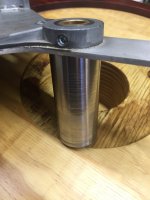 449F178F-20E3-4F72-929F-196568CB7FB1.jpeg275.5 KB · Views: 247
449F178F-20E3-4F72-929F-196568CB7FB1.jpeg275.5 KB · Views: 247 -
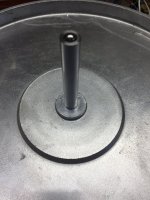 0313D10B-7145-4127-9D79-B4710E583198.jpeg682.9 KB · Views: 245
0313D10B-7145-4127-9D79-B4710E583198.jpeg682.9 KB · Views: 245 -
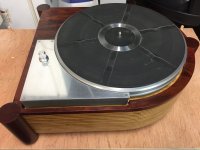 C2CA4274-C858-4892-BB97-9B1EF84B0DF5.jpeg393.7 KB · Views: 227
C2CA4274-C858-4892-BB97-9B1EF84B0DF5.jpeg393.7 KB · Views: 227 -
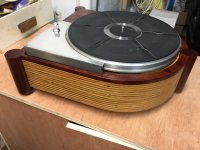 B7D39730-B1CC-4CA6-948A-5B54A55FC3EB.jpeg385.9 KB · Views: 227
B7D39730-B1CC-4CA6-948A-5B54A55FC3EB.jpeg385.9 KB · Views: 227 -
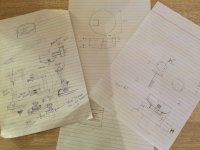 35169A82-301B-462A-B919-A06A27098AAA.jpeg438 KB · Views: 222
35169A82-301B-462A-B919-A06A27098AAA.jpeg438 KB · Views: 222 -
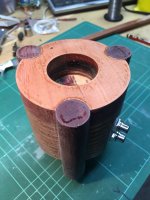 FEEE72DC-FB7C-43C5-BDB8-ECECA3320073.jpeg329.5 KB · Views: 254
FEEE72DC-FB7C-43C5-BDB8-ECECA3320073.jpeg329.5 KB · Views: 254 -
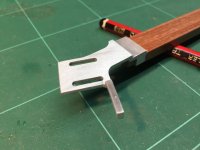 6E71BF18-765B-4C6E-928E-2AA6F1101738.jpeg328.9 KB · Views: 241
6E71BF18-765B-4C6E-928E-2AA6F1101738.jpeg328.9 KB · Views: 241 -
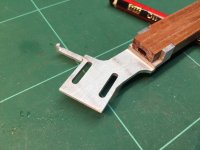 BC7E502E-EE07-448B-9A99-00A9A52ECD40.jpeg404.9 KB · Views: 247
BC7E502E-EE07-448B-9A99-00A9A52ECD40.jpeg404.9 KB · Views: 247 -
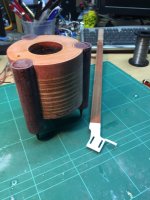 8C3E7911-6ED2-4472-89F0-E0E9EF39682D.jpeg333.9 KB · Views: 245
8C3E7911-6ED2-4472-89F0-E0E9EF39682D.jpeg333.9 KB · Views: 245
In between a full range speaker build, some progress has been made on the tonearm. And beginnings of a lift mechanism.
Attachments
-
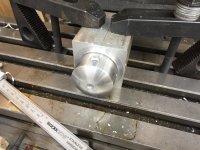 3F329751-128E-43E6-8E64-F91D3AFC049F.jpeg452.7 KB · Views: 185
3F329751-128E-43E6-8E64-F91D3AFC049F.jpeg452.7 KB · Views: 185 -
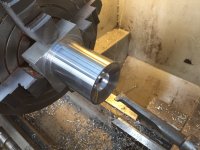 6F83FAA2-6B46-4BB8-B613-AB84BE1ABFC6.jpeg385.9 KB · Views: 172
6F83FAA2-6B46-4BB8-B613-AB84BE1ABFC6.jpeg385.9 KB · Views: 172 -
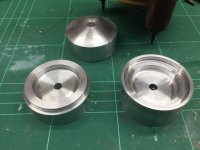 6165711E-219A-4477-BE31-2BDC735E8DE3.jpeg365.5 KB · Views: 163
6165711E-219A-4477-BE31-2BDC735E8DE3.jpeg365.5 KB · Views: 163 -
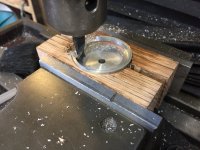 2470E3F2-A0E6-4559-8F19-00F1E338A480.jpeg416.5 KB · Views: 175
2470E3F2-A0E6-4559-8F19-00F1E338A480.jpeg416.5 KB · Views: 175 -
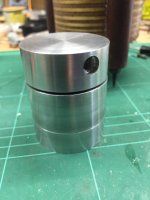 981505CC-D845-4ADF-BDC8-3872590391B2.jpeg244.1 KB · Views: 183
981505CC-D845-4ADF-BDC8-3872590391B2.jpeg244.1 KB · Views: 183 -
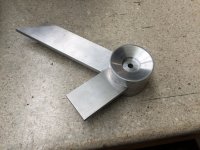 FB7019FF-CCF5-47D4-B5A9-E640ABAFD060.jpeg518.7 KB · Views: 168
FB7019FF-CCF5-47D4-B5A9-E640ABAFD060.jpeg518.7 KB · Views: 168 -
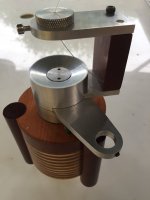 271A4548-91EE-4CAF-BD4F-6688D72B7817.jpeg226 KB · Views: 197
271A4548-91EE-4CAF-BD4F-6688D72B7817.jpeg226 KB · Views: 197 -
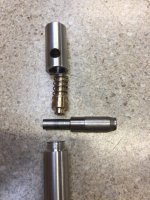 7CAF73EA-4826-4E40-9399-E3C9EA409654.jpeg464.7 KB · Views: 205
7CAF73EA-4826-4E40-9399-E3C9EA409654.jpeg464.7 KB · Views: 205
I just finished assembling my arm, a few things need tidying up and the cartridge wiring still to do. Nearly there!
Attachments
Hi there guys / Frank
I got to testing the tracking force a bit more on my TT. It turns out that Tonearm cartridge hight has a big affect on tracking force. If I set the tracking force to 1,6gr while the (digital) meter is on the plain platter, I get almost 2gr when doing the same measurement placing the meter on a LP. The difference in actual hight is about 2,2 mm (pieces on cork make for half the hight - the LP the other half). Any ideas / comments on this? Is this normal with a Schröder (DIY) arm?
It really does want you to make the measurement at the same plane as the LP(!)
I do know that my tonearm is a bit tilted down wards (compensating the fact that the cartridge fixing surface isn't totally in line horizontally). Does this affect? I'll have to fix this in any case. But otherwise when measuring the tracking force on one plane, the tracing force seems to be quite accurate from beginning to end of record.
I got to testing the tracking force a bit more on my TT. It turns out that Tonearm cartridge hight has a big affect on tracking force. If I set the tracking force to 1,6gr while the (digital) meter is on the plain platter, I get almost 2gr when doing the same measurement placing the meter on a LP. The difference in actual hight is about 2,2 mm (pieces on cork make for half the hight - the LP the other half). Any ideas / comments on this? Is this normal with a Schröder (DIY) arm?
It really does want you to make the measurement at the same plane as the LP(!)
I do know that my tonearm is a bit tilted down wards (compensating the fact that the cartridge fixing surface isn't totally in line horizontally). Does this affect? I'll have to fix this in any case. But otherwise when measuring the tracking force on one plane, the tracing force seems to be quite accurate from beginning to end of record.
Hi jugi63,Hi there guys / Frank
I got to testing the tracking force a bit more on my TT. It turns out that Tonearm cartridge hight has a big affect on tracking force. If I set the tracking force to 1,6gr while the (digital) meter is on the plain platter, I get almost 2gr when doing the same measurement placing the meter on a LP. The difference in actual hight is about 2,2 mm (pieces on cork make for half the hight - the LP the other half). Any ideas / comments on this? Is this normal with a Schröder (DIY) arm?
It really does want you to make the measurement at the same plane as the LP(!)
I do know that my tonearm is a bit tilted down wards (compensating the fact that the cartridge fixing surface isn't totally in line horizontally). Does this affect? I'll have to fix this in any case. But otherwise when measuring the tracking force on one plane, the tracing force seems to be quite accurate from beginning to end of record.
I have two tracking force measuring devices. In both devices, the height from the base of the device to the point where the stylus makes contact with the device is .200". The average LP has a thickness of ~.063". That means that you have to remove the platter mat to set the tracking force. If your platter mat is thicker than .137", you will have to shim up your measuring device. If your tracking force measuring device height from base to stylus contact is different from mine, you will have to alter the dimensions I gave you. Before you do all this, make sure that your tone arm is parallel with the top surface of the platter.
Let me know if this helps.
Sincerely,
Ralf
Hi Ralf,
Yes, thank you! This is what I've been doing. Also the tonearm is level/parallel now.
But what I'm actually asking is that is this a normal aspect with all types of arms or is the Schröder (line/magnet) arm more prone to this kind of thing? Or maybe I am I doing something wrong here (magnet flux not even..)?
Yes, thank you! This is what I've been doing. Also the tonearm is level/parallel now.
But what I'm actually asking is that is this a normal aspect with all types of arms or is the Schröder (line/magnet) arm more prone to this kind of thing? Or maybe I am I doing something wrong here (magnet flux not even..)?
Hello jugi63,Hi Ralf,
Yes, thank you! This is what I've been doing. Also the tonearm is level/parallel now.
But what I'm actually asking is that is this a normal aspect with all types of arms or is the Schröder (line/magnet) arm more prone to this kind of thing? Or maybe I am I doing something wrong here (magnet flux not even..)?
In my opinion, the center of gravity of the tone arm and cartridge assembly should be located at the point where the axes for horizontal and vertical motion of the tone arm intersect. The measured tracking force should then be the same, whether measured above or below the top plane of the LP. The axis of rotation for horizontal motion of the tone arm is the center line of the string, as everyone knows, but the location of the axis of rotation for vertical motion of the tone arm depends upon where it is attached to the tone arm. It should be attached at the vertical center of gravity. And since the location of the vertical center of gravity is not easily determined without mathematics or the use of a CAD program, it would be best to make that point adjustable. Then the tone arm could be balanced to float parallel to the platter. If the magnets interfere with that process, the bottom magnet should be removed.
Sincerely,
Ralf
Ok - I did a mock-up of a gimble tonearm and tested the affect of arm tilt on tracing force.
I measured first with a plain arm and counter weight and then with a 9 gr weight simulating cartridge & hardware. All the time with tracking forces of 1.6-1.9 grams. I tilted the arm first downwards 23mm, then 3mm downwards, then 2,6mm upwards (measuring from arm tip). All millimetre settings are of course compared to the horizontal plane level.
With a plain arm, the difference was about 0.22 gr making the 23mm tilt. With the 3mm tilt there was a 0.06 gr difference. When tilting the arm upwards the 2,6mm, the tracking force became 0.4 gr lighter
With the 9 gr weight at the arm tip, the difference was about 0.5 gr making the 23 mm tilt. With the 3mm tilt there was a 0.09 gr difference. Tilting the tip upwards 2,6mm, made the tracking force 0.8 gr lighter.
So obviously one can make at least three conclusions:
1) When tilting the arm tip/cartridge downwards compared to horizontal plane, it brings on more tracking force.
2) When tilting the arm tip/cartridge upwards compared to horizontal plane, the tracing force becomes lighter
3) Also the heavier the arm is as a whole, the more the weight to the tracking force adds up when tilting the arm downwards or subtracts tracing force when tilting it upwards.
So with a normal gimble arm, assuming one doesn't go over a 3mm tilt (which of course is already huge), every millimetre of downward tilt adds about 0,03 gr of tracking force and every upward tilt subtracts about the same amount.
And yes, these are not with scientific precession, but do point out that not having the tonearm at horizontal level, does affects the tracking force - and by that points out that one should take care to take tracing force measurements at the LP surface plane.
Always a bit wiser!
Cheers!
I measured first with a plain arm and counter weight and then with a 9 gr weight simulating cartridge & hardware. All the time with tracking forces of 1.6-1.9 grams. I tilted the arm first downwards 23mm, then 3mm downwards, then 2,6mm upwards (measuring from arm tip). All millimetre settings are of course compared to the horizontal plane level.
With a plain arm, the difference was about 0.22 gr making the 23mm tilt. With the 3mm tilt there was a 0.06 gr difference. When tilting the arm upwards the 2,6mm, the tracking force became 0.4 gr lighter
With the 9 gr weight at the arm tip, the difference was about 0.5 gr making the 23 mm tilt. With the 3mm tilt there was a 0.09 gr difference. Tilting the tip upwards 2,6mm, made the tracking force 0.8 gr lighter.
So obviously one can make at least three conclusions:
1) When tilting the arm tip/cartridge downwards compared to horizontal plane, it brings on more tracking force.
2) When tilting the arm tip/cartridge upwards compared to horizontal plane, the tracing force becomes lighter
3) Also the heavier the arm is as a whole, the more the weight to the tracking force adds up when tilting the arm downwards or subtracts tracing force when tilting it upwards.
So with a normal gimble arm, assuming one doesn't go over a 3mm tilt (which of course is already huge), every millimetre of downward tilt adds about 0,03 gr of tracking force and every upward tilt subtracts about the same amount.
And yes, these are not with scientific precession, but do point out that not having the tonearm at horizontal level, does affects the tracking force - and by that points out that one should take care to take tracing force measurements at the LP surface plane.
Always a bit wiser!
Cheers!
You can buy Nb magnets with holes in them from https://www.kjmagnetics.com/?msclkid=ff7a340b07871d4d488a565ecd3e70b3 If you need a very small hole, I would add a plastic bushing in the hole of the magnet.
When this thread talks about draining energy, I guess we are adding damping to the system to reduce vibration from the needle on the record and not shielding the cartridge wires from electrical noise. A slick way to add damping would to be surround the magnets with a copper or aluminum tube. Movements in the magnets would induce eddy currents in the tube and dissipate vibration via heat.
Try an experiment sometime. Slide a Nb magnet down a aluminum or copper plate at a 45 deg angle. Compare it to a steel washer. You will be surprised how slow the Nb magnet is. The Nb magnet creates eddy currents in the plate as it moves. The currents are attracted to the magnet and slow it down.
You could also use a wood wand instead of a carbon tube, wood would have more damping than a carbon fiber tube. I have to use individually shielded cables on my wooden wand to reduce electromagnetic noise to an acceptable level.
When this thread talks about draining energy, I guess we are adding damping to the system to reduce vibration from the needle on the record and not shielding the cartridge wires from electrical noise. A slick way to add damping would to be surround the magnets with a copper or aluminum tube. Movements in the magnets would induce eddy currents in the tube and dissipate vibration via heat.
Try an experiment sometime. Slide a Nb magnet down a aluminum or copper plate at a 45 deg angle. Compare it to a steel washer. You will be surprised how slow the Nb magnet is. The Nb magnet creates eddy currents in the plate as it moves. The currents are attracted to the magnet and slow it down.
You could also use a wood wand instead of a carbon tube, wood would have more damping than a carbon fiber tube. I have to use individually shielded cables on my wooden wand to reduce electromagnetic noise to an acceptable level.
Gentlemen,
this is my interpretation of Frank's masterpiece.
After months of reading this and every other thread I could get my hands on I finally started building it.
It took aproximately 20 bottles of read wine, an endless chain of curses (luckily the workshop isn't close to the living room so nobody could hear me) and all my skills to build it.
The more I got into it, the more I realized how brilliant the thoughts behind this tonearm are. And how difficult it is to build.
Many thanks to all of you who contributed whith their thoughts and ideas in this thread.
And last not least let me thank Frank for his generousity to share some of his thoughts with us.
I beleive that this is the beginning of a journey - and not the end as I am sure that I will rebuild parts of the tonearm in order to improve and do better.
Cheers,
Stephan
this is my interpretation of Frank's masterpiece.
After months of reading this and every other thread I could get my hands on I finally started building it.
It took aproximately 20 bottles of read wine, an endless chain of curses (luckily the workshop isn't close to the living room so nobody could hear me) and all my skills to build it.
The more I got into it, the more I realized how brilliant the thoughts behind this tonearm are. And how difficult it is to build.
Many thanks to all of you who contributed whith their thoughts and ideas in this thread.
And last not least let me thank Frank for his generousity to share some of his thoughts with us.
I beleive that this is the beginning of a journey - and not the end as I am sure that I will rebuild parts of the tonearm in order to improve and do better.
Cheers,
Stephan
Attachments
- Home
- Source & Line
- Analogue Source
- DIY Schroeder Tonearm???
